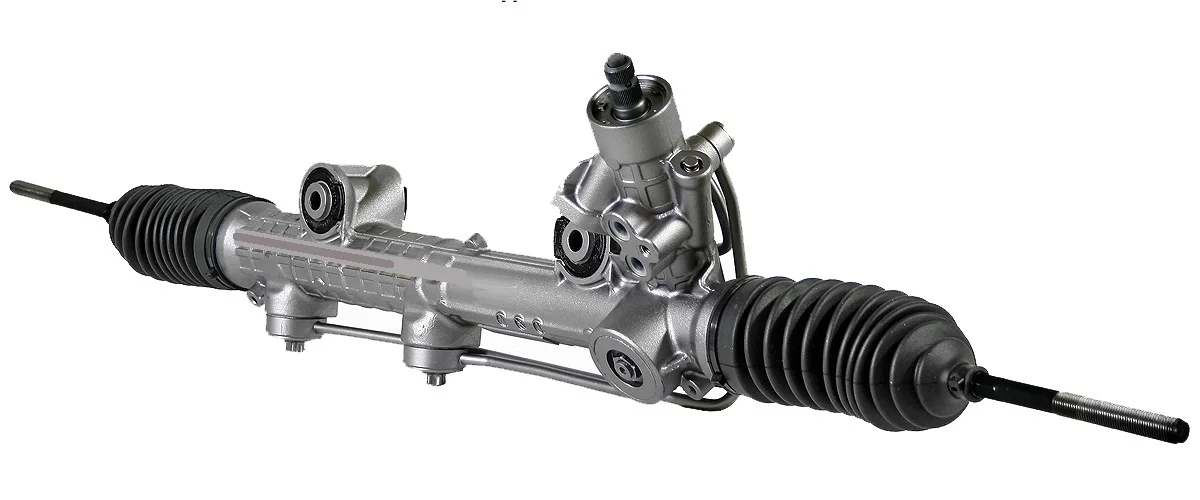R32 GTR Power Steering Rack Solenoid Bypass Kit

R32 GTR Power Steering Rack Solenoid Bypass Kit

1: Overview of the R32 GT-R Power Steering System and the Solenoid
R32 GTR Power Steering Rack Solenoid Bypass Kit: The R32 GT-R features a hydraulic power steering system with a distinctive element: a variable-effort control solenoid located in the steering rack. This solenoid modulates steering effort based on vehicle speed—lighter at low speeds, firmer at high speeds—enhancing driver’s control and comfort. It’s typically controlled by the HICAS ECU, employing pulse-width modulation (PWM) to systematically adjust fluid bypass and assistance levels.
While this design is technologically advanced, the added complexity can introduce failure points. Owners often report intermittent steering heaviness or inconsistency—a behavior commonly traced back to solenoid or bypass valve issues. As a solution, the solenoid bypass kit emerges as a practical modification.
H2-2: What Is a Solenoid Bypass Kit and Why It Matters
A solenoid bypass kit bypasses or removes the factory solenoid, rerouting steering fluid for a constant level of assistance, regardless of speed. By installing either a solid bypass tube or a simplified fitting, it eliminates the dynamic steering effort curve—resulting in a permanently light steering feel.
This modification appeals to drivers seeking predictability—especially in tuned, lowered, or track-focused R32s, where precise steering is more critical than variable resistance. It also reduces system complexity, minimizes failure points, and can improve response time, particularly in racing or drift scenarios.
Analogous solutions exist for other platforms: for instance, the Z33 (350Z) / Z34 (370Z) use a stainless-speed sensitive delete fitting, easily installed in under five minutes, replacing the factory solenoid with no alignment changes.
H2-3: Benefits of Installing a Bypass vs. Keeping the Stock Solenoid
Advantages of Bypass Kits
-
Consistent steering effort – always light, especially helpful during quick maneuvers.
-
Eliminates solenoid failure – common issue contributors like PWM unit malfunction or valve sticking are removed.
-
Simpler, cleaner hydraulic flow – reduced turbulence, reduced internal bypass noise.
-
Improved reliability – fewer electrical and hydraulic components reduce maintenance risks.
Technical Reliability Impact
Forums and technical blogs document troubleshooting steps, including unplugging the solenoid to diagnose steering heaviness. For example, one mechanic noted that unplugging the solenoid didn’t always change steering feel, indicating deeper issues, possibly with the bypass valve spring itself.
Potential Drawbacks
-
Loss of speed-sensitive steering feel – may be too light at high speeds for some drivers.
-
Diagnostic & Warning Light Risk – the system may generate false HICAS or PAS warnings if the solenoid is simply removed without proper handling.
H2-4: How to Choose the Right Bypass Kit or Fitting
Options Available
-
OEM-style bypass tubes – emulate a fixed valve, often made of metal, threaded in place of the solenoid.
-
Deluxe fittings – precision-machined stainless components that screw in exactly like the solenoid but with solid fluid channels.
-
Universal bypass solutions – sourced from the aftermarket (e.g., Dorman’s 926-049 bypass tube, though for GM vehicles, the idea is consistent)—designed for durability and reliable fitment
Selection Criteria
-
Material Quality – opt for stainless or quality alloy to resist corrosion and high pressure (up to 2,500 PSI).
-
Fitment Compatibility – ensure correct thread pitch and sealing for R32 racks.
-
Ease of Installation – thread-in designs simplify removal of the factory solenoid.
-
Available Support – select kits with manufacturer backing or engagement forums for troubleshooting.
H2-5: Installation Guide: Bypassing the Solenoid in Your R32 GT-R
Step-by-Step Process
-
Raise the front of the car safely to access the steering rack.
-
Relieve hydraulic pressure by idling briefly or gently turning wheels while engine off.
-
Unplug the solenoid wiring—take note of connector orientation.
-
Unscrew the factory solenoid; keep the threads clean.
-
Install the bypass fitting or tube, using new O-rings or sealants as needed.
-
Torque to spec, ensuring no leaks—test with fluid system primed.
-
Check for leaks at idle, then drive slowly to confirm consistent assistance.
-
Disable any HICAS or PAS warning, via ECU programming or dash wiring, if needed.
Note: A proper bypass will eliminate the PWM response and provide instant, consistent steering feel—often noticeably lighter.
H2-6: Driving Impressions & Community Feedback
Owners frequently share firsthand experiences in forums and blogs:
“Unplugging the solenoid made the steering light all the time. On the lift, tires in the air, steering was light … suggesting the bypass valve may have been the issue.” — from troubleshooting posts
Another technical contributor explains:
“The rack has a bypass bleed solenoid to vary rack assistance effort.” — emphasizing how bypass kits simplify this variability
Across communities, common sentiments acknowledge that a bypass kit simplifies maintenance, eliminates unpredictable behavior, and ensures instant response—particularly advantageous for drifting, performance driving, or aged components with inconsistent solenoid operations.
Final Thoughts: Optimizing Your R32 with a Solenoid Bypass
The R32 GT-R’s power steering solenoid bypass kit is more than just a modification—it’s a reliable upgrade, delivering consistent steering feel, eliminating a frequent failure point, and simplifying hydraulic flow. Whether you’re building a track car or enhancing road reliability, a quality bypass kit provides precision, predictability, and peace of mind.
Key Takeaways:
-
The solenoid’s variable assistance offers advantages—but can introduce complexity.
-
A bypass kit provides constant light steering, ideal for performance-focused setups.
-
Choose materials and fitment carefully, ensure proper installation, and consider disabling warning systems.
-
Community support notes that bypassing often resolves erratic or heavy steering issues.
Let me know if you’d like recommendations for specific bypass kits, compatible vendors, or wiring diagrams to disable associated ECU warnings!




